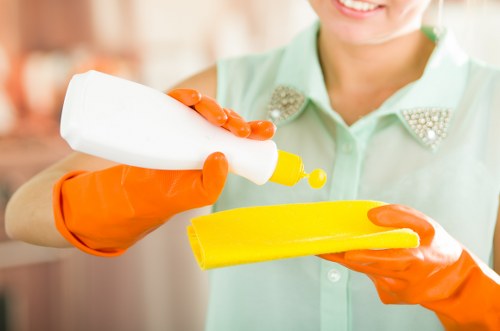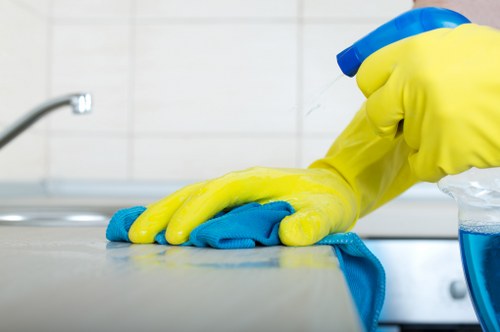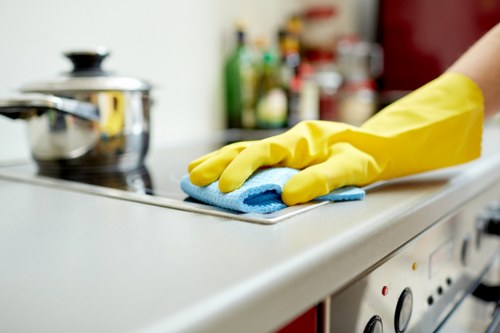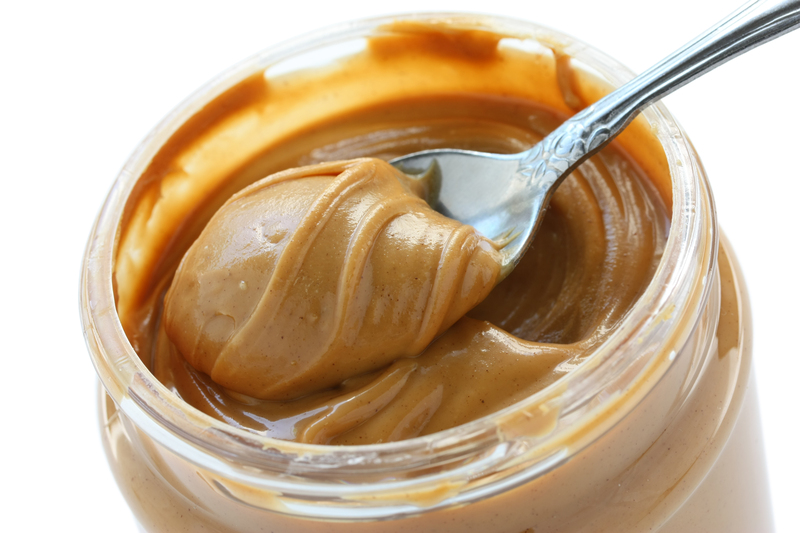Ultimate Guide to Spring Cleaning Your Whetstone

Spring is the perfect time to refresh and rejuvenate not only your home but also your essential tools. One such tool that often goes unnoticed in the spring cleaning process is the whetstone. Whether you’re a professional chef or a home cooking enthusiast, keeping your whetstone in top condition is crucial for maintaining sharp and effective knives.
Whetstones, also known as sharpening stones, require regular maintenance to ensure they function properly. Over time, residue and debris can accumulate on the stone’s surface, diminishing its sharpening ability. This guide will walk you through the steps to thoroughly clean and maintain your whetstone this spring.
Before diving into the cleaning process, it’s important to understand the different types of whetstones available. Knowing your stone’s material and structure will help you choose the right cleaning methods and products.
Understanding Your Whetstone

Whetstones come in various materials, including natural stones and synthetic composites. Natural whetstones are prized for their unique sharpening qualities, but they can be more delicate and require careful maintenance. Synthetic whetstones, on the other hand, are more durable and easier to care for, making them a popular choice for everyday use.
The grit size of your whetstone also plays a significant role in its maintenance. Coarse grits are used for repairing damaged blades or reshaping edges, while fine grits are ideal for honing and polishing. Understanding the specific needs of your whetstone will guide you in keeping it in optimal condition.
Proper storage is another critical aspect of whetstone maintenance. Storing your stone in a dry, stable environment will prevent warping and prolong its lifespan. Avoid placing it near moisture sources or extreme temperatures to maintain its integrity.
Steps for Cleaning Your Whetstone

Cleaning your whetstone involves removing debris and residue that accumulate during use. Here’s a step-by-step guide to ensure your stone remains effective:
- Rinse the Stone: Start by rinsing your whetstone under running water to remove loose particles. Use lukewarm water to avoid thermal shock, which can damage the stone.
- Use a Soft Brush: Gently scrub the surface with a soft brush or non-abrasive sponge to dislodge stubborn debris. Avoid using harsh brushes that can scratch the stone.
- Soak if Necessary: For heavily soiled stones, soak them in a mixture of water and mild detergent. Let them sit for a few hours to loosen embedded particles.
- Rinse Thoroughly: After soaking, rinse the stone thoroughly to ensure all detergent and loosened debris are washed away.
- Dry Completely: Allow the whetstone to air dry completely in a well-ventilated area before storing it. This prevents mold and mildew growth.
Deep Cleaning Techniques

For a more thorough cleaning, especially for natural whetstones, consider the following techniques:
- Using a Stone Cleaning Solution: Specialized cleaning solutions are available for natural whetstones. These solutions help remove deep-seated residue without damaging the stone’s surface.
- Grinding the Surface: Lightly grinding the stone’s surface can help rejuvenate it by removing any pitted or worn areas. This should be done sparingly to avoid altering the stone’s grit structure.
- Heat Treatment: Gently heating the stone can help release trapped moisture and debris. Use a warm, not hot, environment to prevent cracking.
Always follow the manufacturer’s instructions when using specialized cleaning methods to ensure you don’t unintentionally damage your whetstone.
Maintaining Your Whetstone

Beyond cleaning, regular maintenance will extend the life of your whetstone and keep it performing at its best:
- Flattening the Stone: Over time, whetstones can develop uneven surfaces. Use a flattening stone or a lapping plate to maintain a flat surface, ensuring consistent sharpening results.
- Oiling the Stone: Some stones benefit from occasional oiling to prevent drying out and to maintain their texture. Use a light mineral oil and apply it sparingly.
- Avoid Excessive Moisture: While cleaning, ensure the stone doesn’t soak in water for extended periods, as this can weaken its structure, especially for natural stones.
- Proper Storage: Store your whetstone in a dry, cool place away from direct sunlight and extreme temperatures to prevent damage.
Consistent maintenance practices will ensure that your whetstone remains a reliable tool for years to come.
Choosing the Right Whetstone for Spring Cleaning

Selecting the appropriate whetstone is essential for effective sharpening and longevity. Consider the following factors when choosing a whetstone for spring cleaning:
- Material: Decide between natural and synthetic stones based on your sharpening needs and maintenance preferences.
- Grit Size: Matching the grit size to your sharpening tasks will ensure optimal results. A dual-grit stone can offer versatility.
- Size: The stone’s size should accommodate the length and type of knives you frequently use.
- Edge Retention: Some stones provide better edge retention properties, which can reduce the frequency of sharpening needed.
Local Whetstone Suppliers Near Whetstone

If you’re located in or near Whetstone, there are several local suppliers and stores where you can find high-quality whetstones and related accessories. Here are some notable areas:
- North Whetstone: Just 5 miles north, North Whetstone offers a variety of whetstones ranging from beginner to professional levels.
- East Whetstone: Known for its specialized sharpening services, East Whetstone is a great place to get expert advice.
- West Whetstone: West Whetstone hosts several outdoor markets where you can purchase natural whetstones directly from artisans.
- South Whetstone: South Whetstone features large home improvement stores with extensive selections of synthetic whetstones.
- Central Whetstone: Central Whetstone is home to numerous culinary shops that carry premium whetstone brands.
- Whetstone Heights: This area specializes in high-end whetstone products and offers personalized sharpening workshops.
- River Whetstone: Near the river, River Whetstone has several eco-friendly stores that provide sustainable whetstone options.
- Whetstone Park: A popular spot for outdoor enthusiasts, Whetstone Park has vendors selling durable whetstones for camping and hunting knives.
- Old Whetstone: Old Whetstone retains a traditional feel and is known for its antique whetstone collections.
- New Whetstone: The newest area, New Whetstone, boasts modern stores with the latest sharpening technologies and innovations.
Exploring these areas can help you find the perfect whetstone and accessories tailored to your specific needs.
Benefits of Regular Spring Cleaning for Your Whetstone

Regular spring cleaning of your whetstone offers numerous benefits that enhance its performance and longevity:
- Improved Sharpening Efficiency: A clean stone removes any buildup that can dull blades, ensuring your knives stay sharp and effective.
- Prolonged Stone Life: Proper maintenance prevents wear and tear, extending the lifespan of your whetstone.
- Enhanced Safety: Sharp knives are safer to use as they require less force and are less likely to slip during cutting tasks.
- Cost-Effective: Regular upkeep reduces the need for frequent replacements, saving you money in the long run.
- Consistent Performance: Maintaining a flat and clean surface ensures consistent sharpening results every time you use your whetstone.
Incorporating whetstone cleaning into your spring cleaning routine ensures that your culinary tools are in top condition for the year ahead.
Common Mistakes to Avoid When Cleaning Your Whetstone

While cleaning your whetstone, certain mistakes can compromise its effectiveness or even cause damage. Here are some common pitfalls to avoid:
- Using Harsh Chemicals: Avoid abrasive cleaners or strong chemicals that can erode the stone’s surface. Stick to mild detergents and water.
- Excessive Scrubbing: Overly vigorous scrubbing can scratch or wear down the stone. Use gentle motions with appropriate tools.
- Ignoring Drying: Not allowing the stone to dry completely before storage can lead to mold growth and structural damage.
- Skipping Flattening: Neglecting to flatten your whetstone can result in uneven sharpening, which affects knife performance.
- Improper Storage: Storing the stone in damp or unstable environments can cause warping and weaken its composition.
Being mindful of these mistakes ensures that your whetstone remains a reliable and effective tool for all your sharpening needs.
Tools and Supplies Needed for Spring Cleaning Your Whetstone

Having the right tools and supplies makes the cleaning process easier and more effective. Here’s a list of essentials:
- Soft Brushes: Use non-abrasive brushes to gently remove debris without scratching the stone.
- Mild Detergent: A gentle soap helps in cleaning without leaving harmful residues.
- Lint-Free Towels: For drying the stone thoroughly after cleaning.
- Flattening Stone or Lapping Plate: To maintain a flat surface on your whetstone.
- Stone Cleaning Solution: Optional, for deeper cleaning of natural whetstones.
- Protective Gloves: To protect your hands during the cleaning process.
Having these tools on hand will streamline your spring cleaning routine, ensuring your whetstone is properly maintained.
Tips for Maintaining Sharpness After Cleaning
After cleaning your whetstone, it’s essential to ensure your knives remain sharp and effective. Here are some tips:
- Regular Honing: Regularly hone your knives to maintain their edge. This prevents the need for frequent sharpening.
- Proper Usage: Use your knives on appropriate cutting surfaces to reduce wear on the blade edge.
- Avoid Overloading: Don’t overload the whetstone with too much grit at once, as this can lead to uneven sharpening.
- Consistent Sharpening Angle: Maintain a consistent angle while sharpening to ensure a uniform edge.
- Drying Knives Properly: After sharpening, dry your knives thoroughly to prevent rust and corrosion.
Implementing these practices will complement your whetstone maintenance, ensuring your knives stay sharp and your utensils are reliable.
Conclusion
Spring cleaning your whetstone is a vital task that ensures your knives remain sharp, safe, and effective. By following the steps outlined in this guide, you can maintain your whetstone’s performance and extend its lifespan. Whether you’re purchasing a new whetstone or caring for an existing one, regular maintenance is key to achieving the best results in your culinary endeavors.
Remember to choose the right type of whetstone for your needs, utilize proper cleaning techniques, and avoid common mistakes. Additionally, exploring local suppliers near Whetstone can provide you with the best products and expert advice to enhance your sharpening routine.
Embrace the spirit of spring by giving your whetstone the attention it deserves, and enjoy the benefits of sharp, reliable knives all season long.
Frequently Asked Questions
1. How often should I clean my whetstone?
You should clean your whetstone after every few uses or whenever you notice buildup. Regular maintenance prevents debris from affecting your sharpening results.
2. Can I use my whetstone for both knives and scissors?
Yes, you can use your whetstone for both knives and scissors. However, ensure you adjust the sharpening angle accordingly for each tool to maintain their specific edges.
3. What should I do if my whetstone becomes uneven?
If your whetstone becomes uneven, use a flattening stone or a lapping plate to restore its flat surface. Regular flattening helps maintain consistent sharpening performance.
4. Are there natural alternatives to whetstones?
Yes, natural alternatives include ceramic sharpeners and diamond stones. Each type has its own benefits and maintenance requirements, so choose one that best suits your needs.
5. How do I store my whetstone properly?
Store your whetstone in a dry, cool place away from direct sunlight and extreme temperatures. Use a protective cover to prevent dust and moisture from accumulating on the stone.
